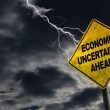Four important questions to ask before buying an ETF
By Howard J. Atkinson, CFA, CIMA, ICD.D
President, Horizons ETFs
When there are literally hundreds of ETF tickers in Canada to sort through, choosing the appropriate solution can seem overwhelming. However, the process can be simplified by asking these four simple questions:
1. Do you need to buy an ETF?
This may seem like a strange question for the president of an ETF company to suggest, as you would expect him to try to convince you that you do. However, it’s a necessary question because choosing to buy an ETF is only one part of building a portfolio.
Before deciding to invest in a mutual fund, an individual security or an ETF, you should first decide on an asset allocation strategy that meets your investment objectives.
Deciding on an asset allocation strategy — the process of determining the right mix of your investments to match your risk and return objectives — is a far more important investment decision than what type of investment vehicle you decide to use.
Most ETF investors choose to buy ETFs because they generally offer low-cost exposure to an asset class. However, that is after an allocation decision has been made. A portfolio comprised of high-fee mutual funds in the “right asset mix” will generally perform better over the long term, from both a risk and return perspective, than a poorly constructed ETF portfolio with low fees invested in the “wrong asset mix.”
Determine your ideal asset allocation and then determine whether an ETF is right for you.
2. What does an ETF track?
The vast majority of ETFs in Canada are indexing strategies that seek to replicate an index comprised of securities in a certain asset class. Indexing has become increasingly popular over the last decade due to the majority of actively managed mutual funds failing to outperform their benchmark index. According to data from Standard & Poor’s, only one out of five mutual fund managers focused on Canadian equities has outperformed the S&P/TSX Composite Index during the last five years.
Investors increasingly reason that they can get much better performance from buying an index strategy at a fraction of the cost of active management. Research has shown that one of the biggest challenges for asset managers is ensuring that the fees they charge are justified, especially because fees erode performance returns.
While high fees have handicapped active mutual fund performance for decades, ETF companies are having success with actively managed ETFs, which combine traditional active management with the low-cost and efficient structure of the ETF vehicle. As options for different types of actively managed ETFs are growing by the day, investors now have the option to use an ETF to get exposure to an asset class that was historically only available in mutual funds, but at a fraction of the cost.
Whether you want global dividend exposure or non-correlated investment exposure, there are active ETFs that can provide it. If you are frustrated by the lack of transparency and liquidity in the fixed income market, actively managed ETFs pose a clear and liquid solution.
3. What is the tracking error of the ETF?
This is specifically related to index ETFs, and it refers to the deviation in performance you can have between the performance of the benchmark and that of the ETF following it. In Canada, we have a number of ETFs that now track the same index. When choosing between ETFs, generally an investor wants to choose the one with the lower tracking error since the returns will be more reflective of the performance of the underlying benchmark.
Factors that can contribute to tracking error are portfolio execution errors and management and trading fees. In addition to comparing performance between ETFs and their benchmark, tax efficiency should also be examined.
4. How liquid is the ETF?
This is a little bit of a trick question. Although investment commentators can agree that liquidity is an important consideration in an investment strategy, the way in which some commentators use trading volume to assess an ETF’s liquidity can be misleading.
ETFs, like mutual funds, are open-ended investment funds that can always create more units to meet subscription demand (i.e. more buyers). The liquidity of an ETF is derived from the liquidity of the underlying securities that it holds and not the number of ETF units that get bought or sold in a given day.
While an ETF may not have traded any units on a given day, it has essentially the same liquidity as an ETF that trades hundreds of thousands of units a day, tracking the same benchmark.
Knowing what causes an ETF to be liquid is important to your decision because you don’t want to let low volume discourage you from pursuing an ETF strategy that is right for you.
Once you have answered these four questions, especially having determined your investment objectives and the appropriate asset allocation strategy, the next step of choosing the right ETF should be a less daunting task.
This post was originally published at ETF World Magazine Canada













